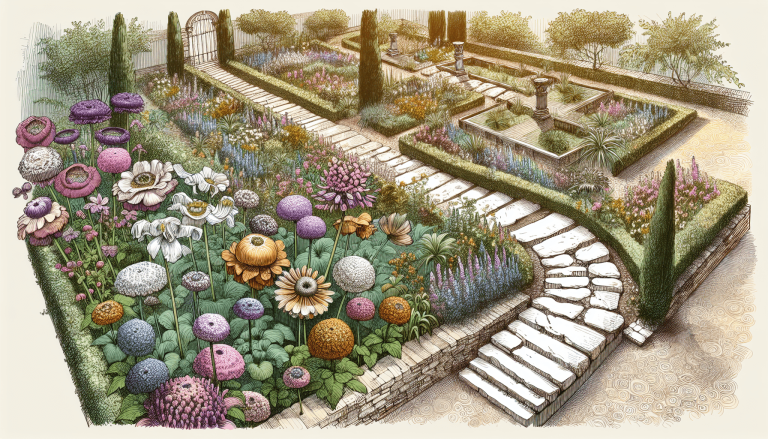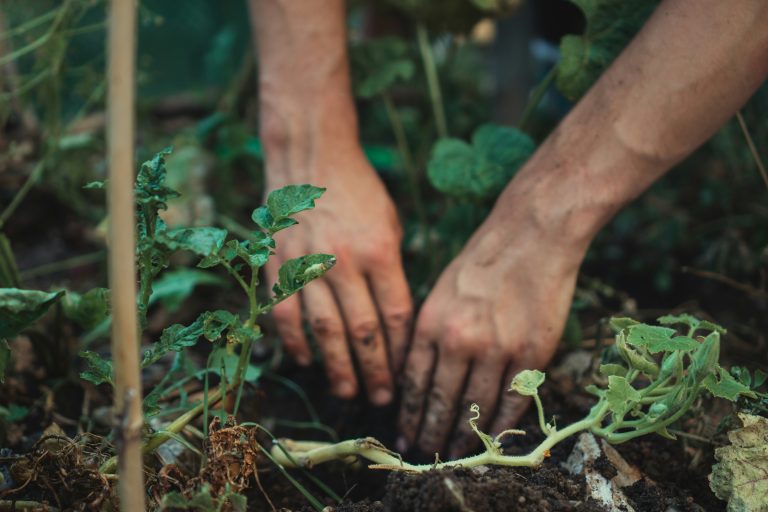Are you struggling to choose the perfect plants for your garden? Don’t worry, we’ve got you covered! In this article, we will explore the best ways to select the right plants for your garden’s unique conditions. From understanding the soil type to considering the amount of sunlight, we will provide you with practical tips and expert advice that will help transform your garden into a vibrant and thriving oasis. So get ready to discover the secrets of successful plant selection and create a garden that will leave your neighbors green with envy!
Table of Contents
ToggleAssessing Your Garden’s Conditions
Determining the Soil Type
Assessing your garden’s soil type is crucial in choosing the right plants for your garden. Soil can vary greatly in composition, with the most common types being sandy soil, clay soil, and loamy soil. To determine your soil type, you can perform a simple test. Take a handful of soil and squeeze it in your hand. If it easily crumbles and falls apart, you likely have sandy soil. If it retains its shape when squeezed and feels sticky, you likely have clay soil. If it holds its shape but crumbles easily, you likely have loamy soil.
Analyzing the Sun Exposure
Understanding the sun exposure in your garden is important as it helps you select plants that thrive in specific light conditions. Spend some time observing your garden throughout the day to determine which areas receive full sun, partial shade, or full shade. Full sun refers to areas that receive at least six hours of direct sunlight, while partial shade refers to areas that receive four to six hours of sunlight. Full shade means areas that receive less than four hours of direct sunlight.
Evaluating the Drainage
Assessing the drainage in your garden is crucial as it affects the health and growth of your plants. Poor drainage can lead to waterlogged soil, which can cause root rot and other issues. To evaluate the drainage, observe how quickly water drains after a rain shower. If the water sits on the soil surface for an extended period, you may have poor drainage. On the other hand, if the water quickly seeps into the ground, you likely have good drainage.
Understanding the Climate
Understanding your garden’s climate is essential in selecting plants that can withstand the temperature and weather conditions in your area. Consider your region’s average annual rainfall, temperature range, and any extreme weather conditions such as frost or heatwaves. This information will help you determine which plants are best suited for your garden’s climate. It’s also important to consider microclimates within your garden, as certain areas may have different climate conditions due to factors like wind exposure or proximity to buildings.
Choosing Plants for Specific Conditions
Plants for Sandy Soil
If you have sandy soil, it’s important to choose plants that are well-adapted to well-draining and low-nutrient conditions. Some suitable plant options for sandy soil include lavender, rosemary, sedum, yarrow, and cacti. These plants are known for their drought tolerance and thrive in sandy soil.
Plants for Clay Soil
Clay soil tends to hold water and can become compacted. It’s essential to choose plants that can tolerate heavy soil and have good drainage. Some suitable options for clay soil include daylilies, hostas, coneflowers, asters, and black-eyed Susans. These plants are known for their ability to withstand clay soil conditions and thrive in moisture-retaining environments.
Plants for Full Sun
If your garden has areas with full sun exposure, you have a wide range of plant options to choose from. Sun-loving plants typically require at least six hours of direct sunlight per day. Some popular choices for full sun areas include sunflowers, marigolds, zinnias, petunias, and tomatoes. These plants thrive in bright, sunny conditions and will reward you with beautiful blooms or a bountiful harvest.
Plants for Part Shade
For areas in your garden that receive partial shade, it’s important to choose plants that can tolerate less sunlight. Partial shade refers to areas that receive four to six hours of direct sunlight per day. Some suitable plant options for part shade include hydrangeas, impatiens, ferns, begonias, and hostas. These plants can tolerate some shade while still producing vibrant blooms or lush foliage.
Plants for Poor Drainage
If your garden suffers from poor drainage, it’s crucial to select plants that can thrive in waterlogged soil conditions. Some suitable options for poor drainage include water iris, swamp milkweed, Siberian iris, cardinal flower, and elephant ears. These plants have adapted to growing in moist environments and can handle excess water.
Plants for Dry Climate
If you live in a dry climate, it’s important to select plants that are drought-tolerant and can withstand hot, arid conditions. Some suitable options for dry climates include succulents, cacti, lavender, Russian sage, and agave. These plants have adapted to conserving water and require minimal irrigation.
Plants for Humid Climate
In a humid climate, it’s important to choose plants that can thrive in high humidity and moist conditions. Some suitable options for humid climates include ferns, caladiums, begonias, impatiens, and elephant ears. These plants are known for their ability to handle moisture and will thrive in humid environments.
Plants for Cold Climate
If you live in a cold climate, it’s important to choose plants that can withstand freezing temperatures and snow. Some suitable options for cold climates include evergreen trees like spruce and pine, as well as cold-hardy perennials like coneflowers, daylilies, Russian sage, and hellebores. These plants have adapted to colder temperatures and will survive through winter.
Plants for Warm Climate
In a warm climate, it’s crucial to choose plants that can handle high temperatures and intense sunlight. Some suitable options for warm climates include tropical plants like hibiscus, bougainvillea, palms, and mandevilla. These plants thrive in warm conditions and will add a touch of exotic beauty to your garden.
Considering the Plant’s Characteristics
Desired Plant Height
When choosing plants for your garden, consider the desired height of the plants. Determine whether you prefer tall, medium, or low-growing plants in different areas of your garden. This will help create a visually appealing and well-balanced landscape.
Planting Space Requirements
Each plant has specific spacing requirements to ensure optimal growth and prevent overcrowding. Read the planting instructions provided with each plant or consult gardening references to determine the appropriate spacing for your chosen plants. This will help them thrive without competing for resources.
Blooming Season
Consider the blooming season of different plants to ensure a continuous display of color and interest in your garden throughout the year. Choose a combination of plants that bloom in different seasons, including spring, summer, and fall, to create a visually stunning garden throughout the year.
Evergreen vs. Deciduous
Decide whether you prefer evergreen plants that retain their foliage year-round or deciduous plants that shed their leaves during certain seasons. Evergreen plants provide year-round interest and privacy, while deciduous plants offer changing colors and textures as the seasons pass.
Disease and Pest Resistance
Research the disease and pest resistance of different plant varieties to choose those that are less susceptible to common garden issues. Selecting disease and pest-resistant plants can save you time and effort in maintaining a healthy garden.
Researching Plant Options
Consulting Gardening References
Gardening references such as books, magazines, and online resources can provide valuable information on different plants, their characteristics, and suitable growing conditions. Take the time to read and gather ideas from these resources to help you make informed decisions about which plants to choose for your garden.
Internet Research
With the vast amount of information available online, the internet can be a valuable tool in researching plant options. Visit gardening websites, forums, and blogs to discover plant recommendations and read about other gardeners’ experiences with different plant varieties. Take note of any specific advice or tips that can help you in selecting the right plants for your garden.
Visiting Local Nurseries
Visiting local nurseries provides the opportunity to see and touch different plants, allowing you to assess their quality and health. Nurseries also often employ knowledgeable staff who can offer advice and recommendations based on your garden’s conditions and your preferences. Take the time to explore various nurseries in your area to find a wide selection of plants and expert assistance.
Seeking Advice from Experts
If you’re unsure about which plants to choose or need guidance on specific gardening issues, don’t hesitate to seek advice from gardening experts. This can include local horticulturists, gardening clubs or societies, or even experienced gardeners in your community. Their expertise can help you make well-informed decisions and overcome any challenges you may face in your garden.
Experimenting and Monitoring
Start with Small Plantings
Incorporating new plants into your garden can be an exciting experiment, but it’s always wise to start with small plantings. This allows you to observe how the plants perform in your garden’s conditions without investing too much time and effort. Plant a few specimens of each chosen plant and monitor their growth and health over time.
Observe Plant Performance
Regularly observe and monitor the plants in your garden to ensure they are thriving and adapting well to your garden’s conditions. Look for signs of stress or disease, changes in growth patterns, and overall plant health. Take notes on what works well and any adjustments you may need to make in terms of watering, fertilizing, or positioning.
Make Adjustments as Needed
Gardening is a continuous learning process, and it’s important to be open to making adjustments as needed. If a plant isn’t thriving or doesn’t perform as expected, consider relocating it to a different area or replacing it with a better-suited plant. Flexibility and adaptability are key in creating and maintaining a beautiful and healthy garden.
By assessing your garden’s conditions, choosing plants that are well-suited to those conditions, considering plant characteristics, researching plant options, and experimenting while closely monitoring, you can confidently select the right plants for your garden. Remember that each garden is unique, and it may require some trial and error to find the perfect combination of plants. Enjoy the process and have fun creating a vibrant and flourishing garden that brings you joy and satisfaction for years to come.








